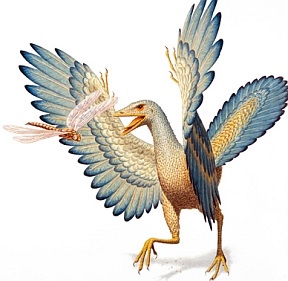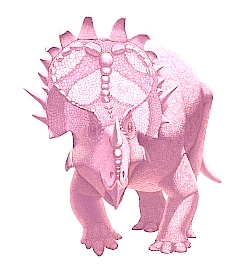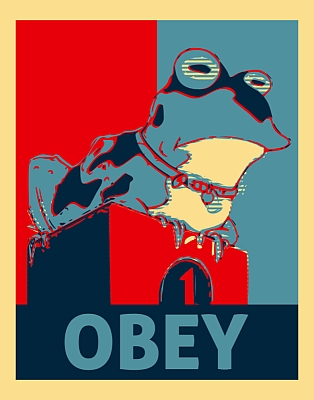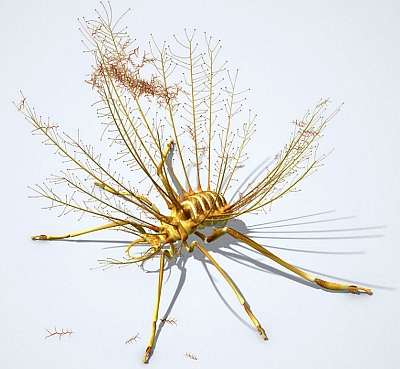The Jitundege
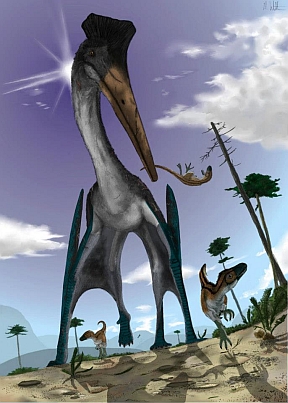
The jitundege (jē-tŭnd-ē-gǝ) is an enormous xenobeast combining the traits of birds and reptiles. They make nests high up on the imposing cliffs that dominate the western sea coasts of Lygia, not too far from the Shenzi Highlands.
A full-grown jitundege stands about 20 feet at the shoulder. It’s neck, about 12-feet in length, supports a narrow, long cranium. A strong, saw-toothed beak comprises most of the cranium’s length. A fan-like ridge of cartilage covered with fine down tops the head. A jitundege has wing membranes extending between its fingers and toes as webbing, a uropatagium, or membrane between the feet and tail, and a propatagium, or membrane between the wrist and shoulder. Iron-hard keratin sheaths cover its finger and toe claws, which extend and curve into sharp hooks well beyond their bony cores.
Jitundeges lack the ability to truly fly like birds. Instead, they must launch themselves by dropping from a height, much like an enormous bat. Once airborne, a jitundege can remain aloft for hours, drifting on thermals and flapping its membrane wings for additional thrust and altitude. These creatures are also far from helpless on the ground. They can trot on all fours faster than a man can run.
Jitundeges prey on smaller land animals (those roughly the size of an adult human). The typical attack involves catching the victim with a powerful bite and then flipping it through the air to crash back to the ground (6d6 points of damage with an Evasion save for half damage). These xenobeasts also use their powerful foreclaws to rend their prey so as to gain access to its internal organs.
The jitundege’s bony cranial ridge houses and protects a complex neural cluster that protects the xenobeast from psionics. Any creature that targets a jitundege with a psionic power must make a Mental Effect saving throw. If the creature fails this saving throw, it suffers neural feedback that inflicts hit point damage equal to half the activation cost of any powers they use. Mastered powers are treated as if they had their normal activation cost. The existence of this psionic defense adaptation is a source of controversy as there are no known psionic predators on Lygia.
Stars Without Number Data
Jitundege
Armor Class: 4
Hit Dice: 12
Attack Bonus: +12
Damage: 3d6 bite and catch, 2d6/2d6 claws
No. Appearing: 4-16
Saving Throw: 9+
Movement: 40 ft., 60 ft. flying
Morale: 9
